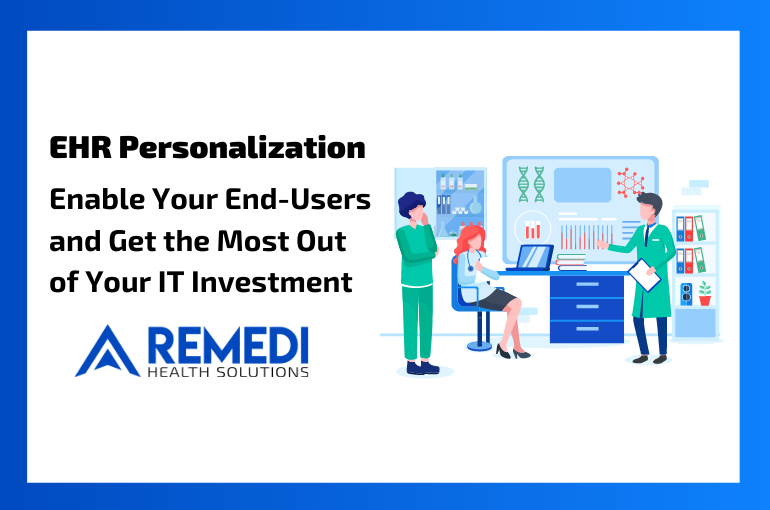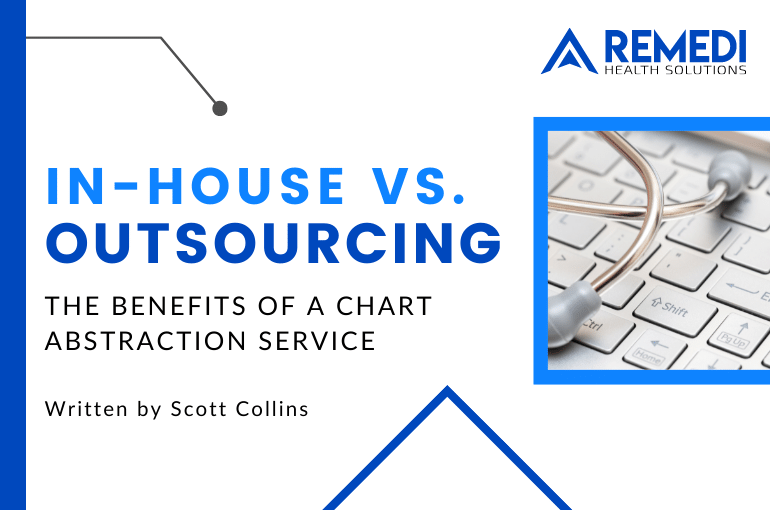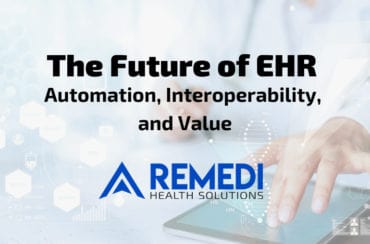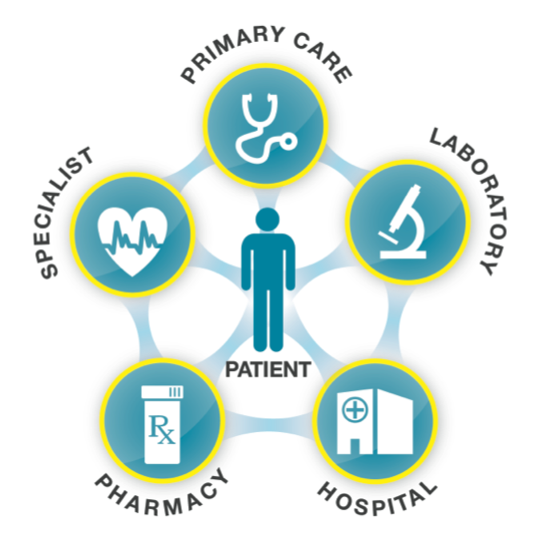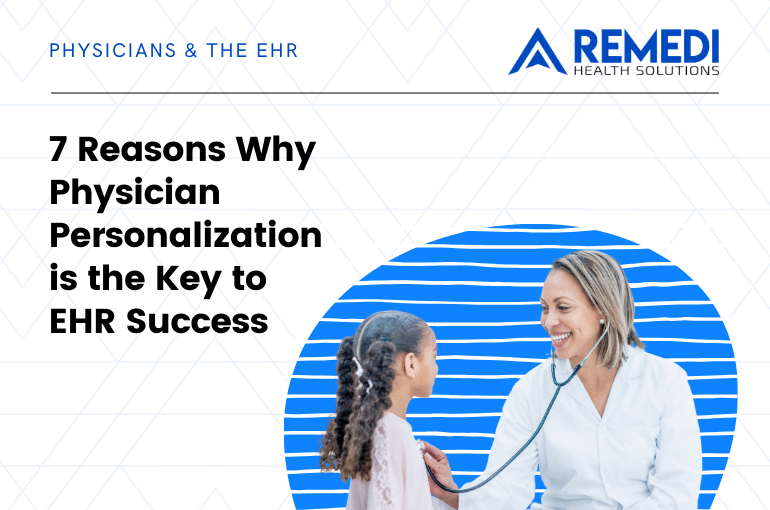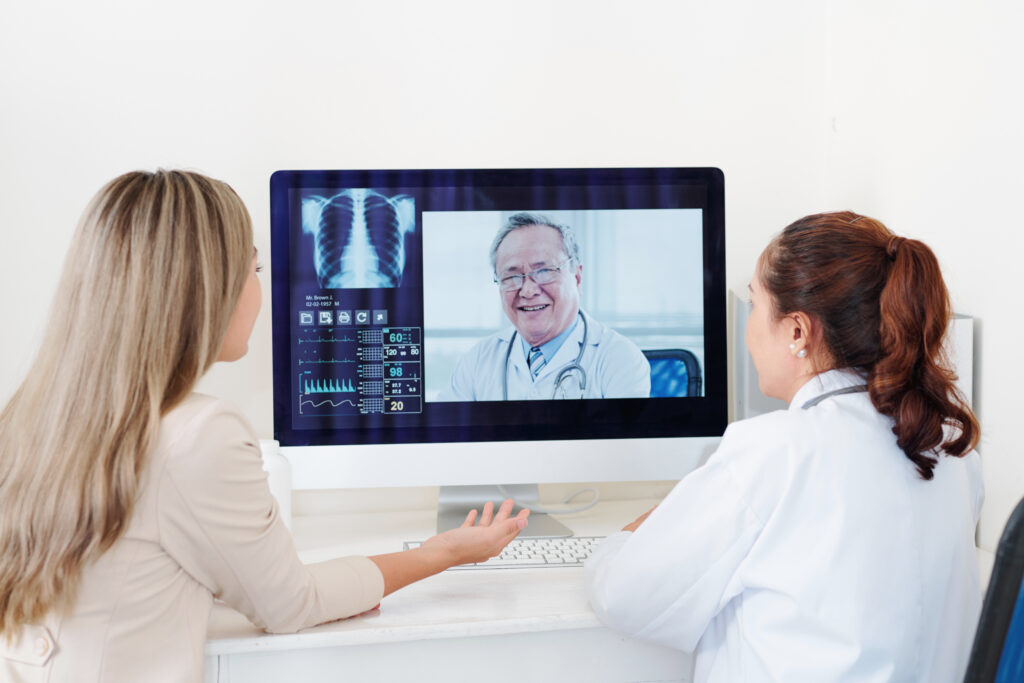Unlock the Full Potential of EHR Personalization to Optimize Your IT Investment
Technological advancements in the healthcare ecosystem have enabled safer medical workflows, efficient communication, and better clinician-patient management. With the natural progression of paper records to digitization, these systems have proved to benefit clinicians, administrators, and patients. Electronic Health Record (EHR) systems are a robust version of patient’s history, diagnosis, and treatment. When implemented effectively, personalized EHR healthcare technology transforms patient care, making it easier for doctors to spend more time with patients and spend less time doing paperwork.
In this article, we’ll discuss the integral elements of Electronic Health Record (EHR) systems, training, implementation standards, and the positive impact EHRs have on healthcare when personalized and implemented effectively.
The Convergence of Technology and Healthcare: Electronic Health Records
EHR systems have proven to be a game-changer, now replacing paper records on a grand scale. Here are some of the meaningful benefits of EHR Systems:
Easy access to patient data
Patient records, history, diagnosis, and reports from other clinicians are seamlessly shared without worrying about writing out forms, filing, and time-consuming administrative work.
Consistency and quality management
With records accessible in real-time, there’s less chance of human error in reporting, dramatically improving workflows for clinicians.
Secure data
Unlike paper records, EHR systems are built for authorized users, making them less vulnerable to being lost or stolen. The cloud is a reliable source of data storing, with backups saved to ensure it’s safety.
Patient satisfaction
Providers can ensure a smooth administrative process to make the patient experience less uncomfortable. By being able to access information on the go, it takes logistic hinderances away from the process.
Traditional EHR Training Methods
Healthcare institutions use traditional training methods to train their staff for using EHR Systems. These include the following:
Arranging Workshops
In these workshops, a trainer guides the team step-by-step through a proper demonstration of the system by helping the staff become familiar with the system.
Hands-on Experience
Although workshops are beneficial for learning, demonstrations alone do not familiarize clinicians enough to become expert users. Hands-on experience is an integral part of the process. By completing tasks repeatedly over time, clinicians better understand how to use the system.
Team-based Training Methods
Making teams consisting of different patient care professionals is also an essential training method, as it helps the staff understand how the system works, and how their interactions will change with the implementation of this system.
The Gap Between EHR Technology and Healthcare
Traditional methods of implementation lack a vital step in the digital shift: the personalization of EHR systems. Supporting clinicians and showing them how to maximize their workflow is best done by… well, clinicians.
The traditional methods of EHR implementation involve training a group of clinicians together, instead of being personalized to each clinician individually. As a result, it is highly likely that the clinician is not able to understand how EHR technology can make a positive impact on their practice, and thus may not take an interest in the training at all.
Apart from this, some clinicians may be reluctant towards this change and may not accept it wholeheartedly. Healthcare administrators must deal with this problem head-on as it can cause significant problems, especially if the clinician is solely responsible for data management.
Bridging the Gap between Healthcare and Technology
For successful EHR implementation training, organizations should focus on using an EHR consultant with a clinician background, as well as making the training exercises more personalized. ReMedi Health Solutions designs customized training solutions that incorporate real clinical workflows, evidence-based content, associated financial performance, and keep the patient experience at the center of it all.
In conjunction with formal classroom and training sessions, ReMedi physicians engage in one-on-one meetings with healthcare clinicians and conduct training tailored to the duties they carry out in a highly professional and knowledgeable manner.
A 30,000 foot view of ReMedi’s EHR Personalization process:
- ReMedi leads clinicians through the development of preference lists and custom order set defaults within the new EHR system.
- ReMedi hosts small team-based training sessions, where clinician team members shadow EHR super users for additional user support.
- ReMedi provides post-go-live service and support, where ReMedi consultants assist clinicians with issues that they might have immediately after the implementation of a new EHR System.
The Bottom line: EHR Personalization is Key
Working with ReMedi Health Solutions results in several core improvements for healthcare providers: improved operational efficiency, better knowledge about the EHR, and, most importantly, a greater clinician acceptance towards the system. Ultimately, our mission is to work with healthcare providers to positively impact the future of patient care.
If your organization is migrating to a new EHR system or is looking to optimize its existing EHR, get in touch with ReMedi Health Solutions. We would love to have a friendly chat to see if we can make a substantial impact on the operational and financial quality of your healthcare organization.
Email us at info@remedihs.com or send us a message.
